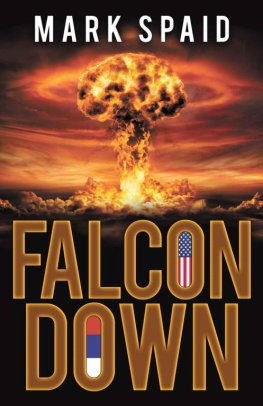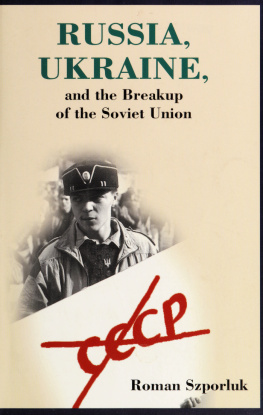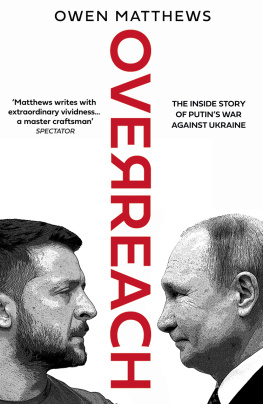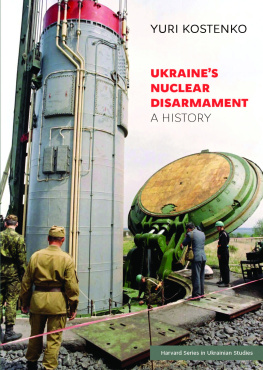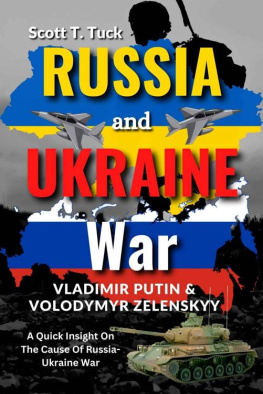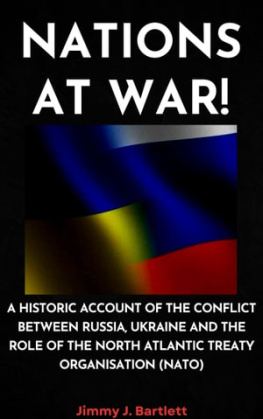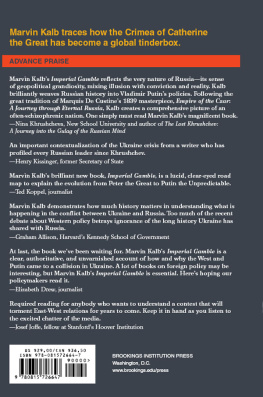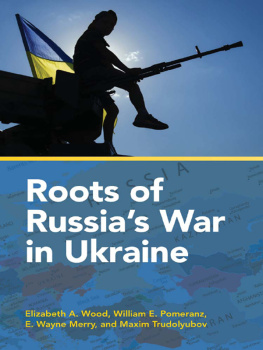I wrote this book for James Tomlin. He is my oldest son Jordans life companion. He came to us twelve years ago and he has been a pleasant addition. James is warm, friendly, easy to like and we are very happy to have him in our family. He is a hard worker and he and Jordan make a splendid couple. James is intelligent, thoughtful with a marvelous sense of humor and he cares about people. Those are traits in people that I like very much and for those reasons and many more I am proud to dedicate this book in his honor.
In a nuclear war the survivors will envy the dead
Nikita Khrushchev
Russia began to evolve as a modern nation state in the early Eighteenth Century just as the United States became one later in that century. So, the two future super powers and frequent adversaries came on the world scene at roughly the same time. That, however is where the similarity ends. The United States was bitten with the bug of governing by the consent of the people and individual human rights. The concept of freedom and representative government conducted by elected officials answerable to the people was ingrained in the populace of early American citizens. Individual freedom and the ability to express their concern for governmental acts that challenged that freedom was so endemic to the American psyche that it defined and still defines the fabric of American society.
Russia was a completely different atmosphere. It is a much older country than the United States. The landings at Jamestown and Plymouth, Massachusetts in the Seventeenth Century were the first white men to populate what became the United States. In Russia, however, there were settlements and thriving civilizations in the third and fourth centuries AD. The Greeks, Turks, Mongols and other cultures settled in Russia. Partially, due to these foreign invasions the long history of Russia is accented by one thing violence. The Huns, the Mongols and other groups that collectively could be called barbarians, ravaged Russia for hundreds of years. To restore some semblance of order a monarchy was established with the ascension of Ivan the Terrible in 1547. His name is of course suggestive of his behavior as Tsar and though he was perhaps the most sadistic of all of them the Tsars in general were dictators like any hereditary monarchy. Secret police, violence, intimidations, executions were common and without any pretense of laws to govern, such things were the norm. As time passed a feeling developed among Russian society regarding misbehavior by the populace. Whenever things became chaotic the police and army would step in and bash heads, arrest and shoot hundreds or even thousands. It was the way in Russia and the people knew that. There developed a saying that covered these occasional departures from obedience. The Russian people long to feel the whip. In other words, they wanted the government to step in and punish the law breakers and the revolutionaries. Of course, no one wanted to feel the whip themselves. They wanted others to feel it and behave. Mass arrests under the Tsars and later the Communists was nothing new and not really a major cause for concern as long as it didnt hit too close to home like the front door.
Russia was engulfed in a long series of private wars between the wealthy land owners, called Boyars, during the Sixteenth Century. It was aptly called the Time of Troubles and in 1613 the Boyars had enough killing and decided to place another Tsar on the throne to provide stability. His name was Michael Romanov and his descendants would rule until 1917. During this time the whip was employed many times and order was maintained. Hundreds of thousands were beaten, shot, hanged, banished etc. to keep order. It was a part of the Russian experience to be visited by violence and people were used to it.
Then in 1917 the last Tsar, Nicholas II was overthrown and he and his family later shot. The Communists took over Russia and the first thing they did was to embark on a program of violent retribution against the former ruling class. So, the cycle of killing went on uninterrupted. Vladimir Illyich Ulyanov, known as Lenin, became the first Communist leader of Russia. He died in 1924 and after three to four years of struggle a man emerged as the sole leader of Russia. He was born in 1878 in the province of Georgia as Ioseb Besarionis dze Jughashvili. After becoming a revolutionary, he mercifully for all involved, especially historians and researchers, changed his name to Joseph Stalin. He would certainly qualify as one of the leading psychopaths of the Twentieth Century. A heartless, sadistic butcher who reigned down a period of slaughter for twenty-five years in which somewhere between thirty and sixty million people were executed as the whip continued its sinister work throughout Russia.
Stalin, though, projecting fear throughout the country, nevertheless had a loyal following and his death saddened many in Russia. After his death, Nikita Khrushchev tried to assure the world that the excesses of Stalin were born of a revolutionary zeal to help the working class and would not be repeated. As time has progressed, most who were alive when Stalin died in 1953 have passed but some old-timers remain and many young people have looked to Stalin as the answer to Russias problems with the United States and the world in general. Stalinism is on the rebound and the idea of a Stalinist state has emerged with popularity. There are, in fact, groups of Stalinists who seek to reestablish the old Soviet Union that existed before the collapse of Communism in 1991. They are determined to see their goals achieved and will resort to anything to achieve those ends including, kidnapping, robbery, murder and assassination. It is a new dawn of violence in a country that has known nothing but violence throughout its entire existence. It is a new age of the whip.
THE GENESIS OF CRISIS MENTALITY
The Cold War began right after the end of World War II and some would say even before the end of the war. Russia and the United States were the two super powers that emerged out of the devastation in Europe and they remain the two most powerful countries in the world. Of course, there can only be one bully on a block and when there are two, a conflict is inevitable. Great distance separates these two giants but the tenuous peace in Europe after the war that included Russian occupation of Eastern Europe led to a nose to nose staring match across the war-torn continent. The Americans were in Western Europe faced off against the Soviet Union in the East. Now, it should be noted that the terms Russia and The Soviet Union are two different things. Russia refers to the boundaries of traditional Russia minus the former Tsarist control of Poland and the Baltic countries. In itself a large country but the Soviet Union included the Baltic countries and after World War II they added hegemony over Poland, Hungary, Romania, Bulgaria, Czechoslovakia and East Germany. On the surface, Eastern Europe was autonomous with governments in place but they were puppets of Moscow. The Soviet Union ran the show. (See Budapest 1955 and Prague 1968).
Conflict among countries and regions is as old as the Earth itself and the standoff between the two super powers wouldnt have been anything new except for the X factor nuclear weapons. Those men in the desert at Los Alamos, New Mexico between 1942 and 1945 created something that has forever changed the face of warfare and civilization. They were brilliant physicists, some of the brightest men who ever lived and to their defense they were driven by a pressing desire to beat Adolph Hitler to the ultimate weapon the atomic bomb. Everyone knew if Hitler had the bomb, hed use it. So, the race was on and it had to be won to save mankind. Thus, was the talking points and the motivation to develop a nuclear fission bomb? They would reach up and take part of the sun and use it to destroy part or all of the Earth. The moral argument against nuclear weapons is easy to make now but try making it in 1945 when the war was sending home dead American soldiers every day and the invasion of Japan promised as many as a million more. So, the bomb was made and used on Japan; Hiroshima and Nagasaki it worked and Japan surrendered thus saving lives on both sides.

